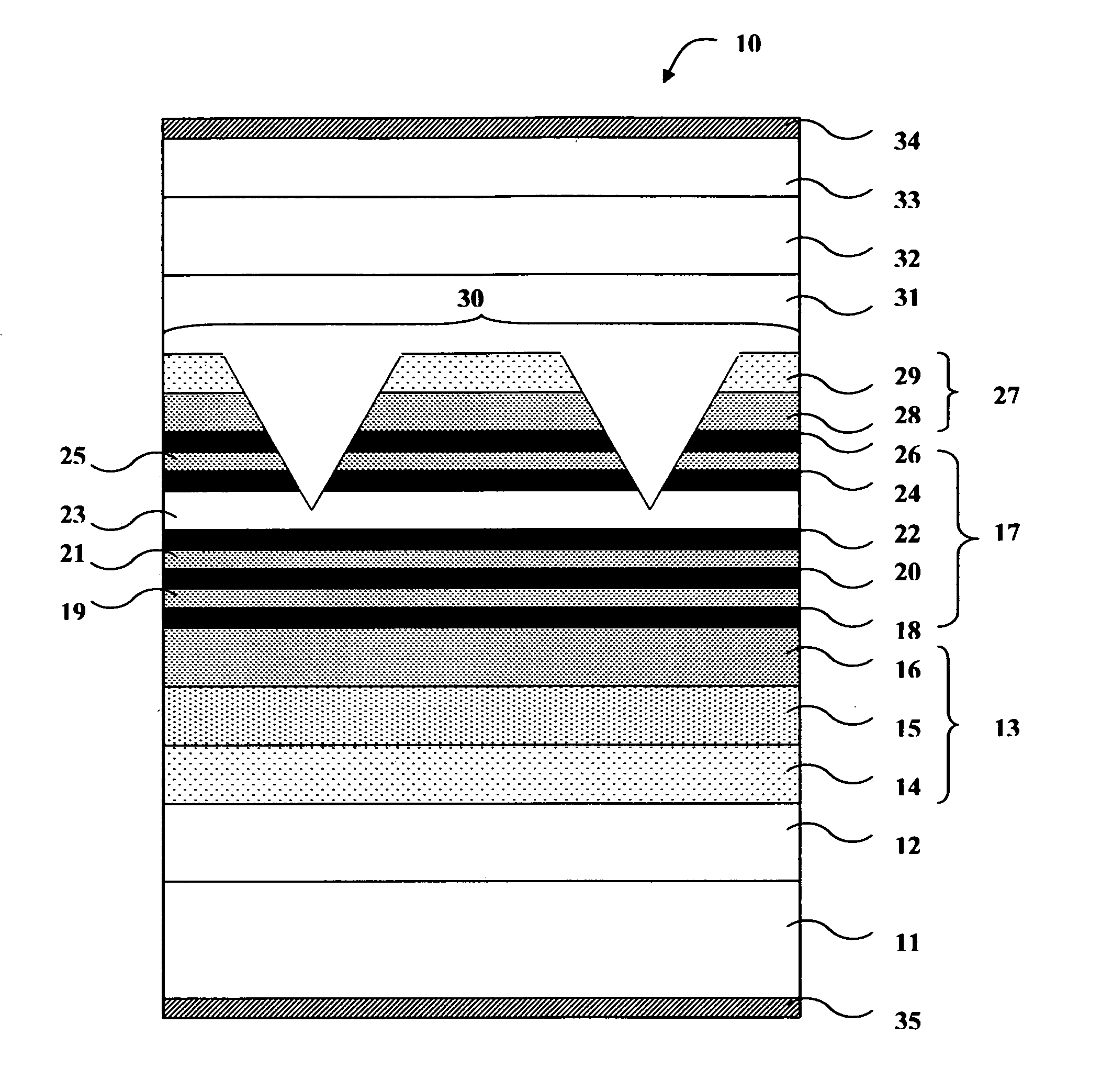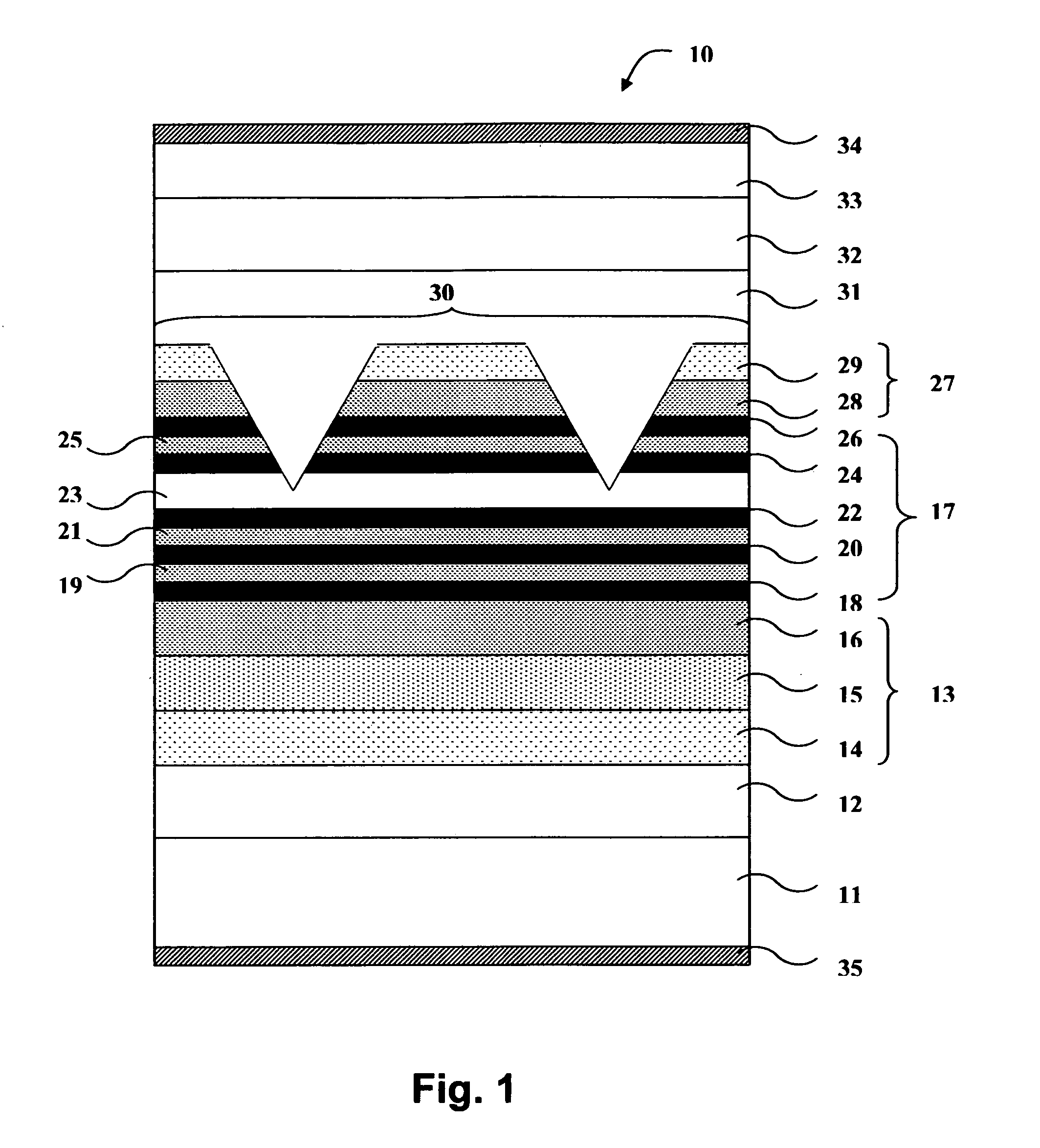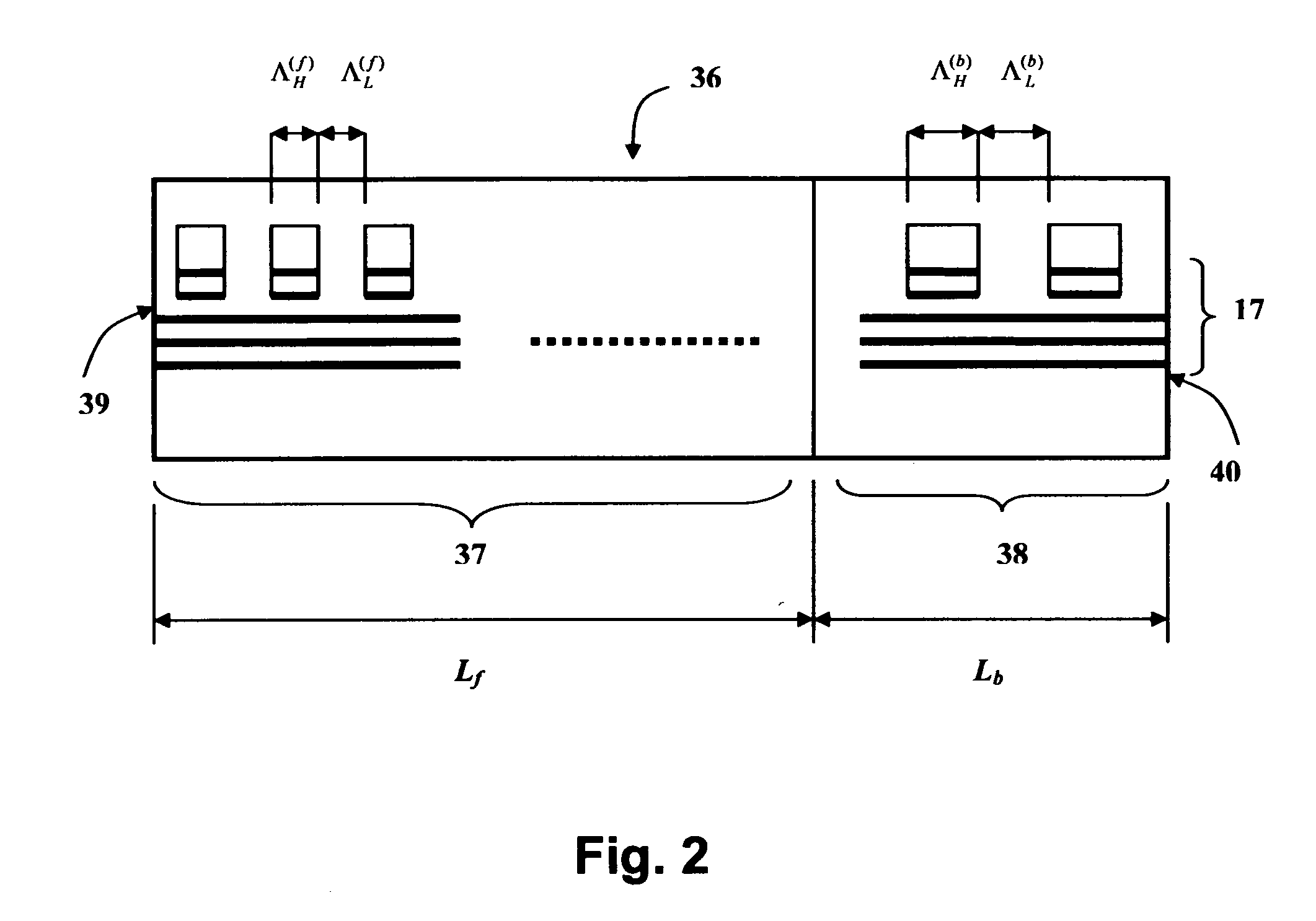Complex-coupled distributed feedback semiconductor laser
a distributed feedback and semiconductor laser technology, applied in lasers, lasers, optical resonator shape and construction, etc., can solve the problems of poor single-mode operation, failure to meet the requirements of stable single-mode operation, and failure to meet the requirements of high single-mode yield and high output power
- Summary
- Abstract
- Description
- Claims
- Application Information
AI Technical Summary
Benefits of technology
Problems solved by technology
Method used
Image
Examples
first embodiment
[0029] A schematic cross section through a complex-coupled DFB laser device 10 according to the present invention is shown in FIG. 1. The DFB laser structure is composed of an active region with periodic variation of thickness, which is made by etching through a part of the active region, and composed of upper and lower cladding layers. The device includes an N-type InP substrate 11 on which is grown a 1.5 μm thick buffer layer 12 of N-type InP. A first separate confinement region 13, consisting of three confinement layers 14, 15, and 16, of N-type InGaAsP with bandgap energies corresponding to wavelengths of 1.0 μm, 1.05 μm, and 1.1 μm, respectively, is provided over the buffer layer 12. The thickness of each confinement layer is 20 nm. An active region 17 overlies the confinement region 13 and comprises five QW layers 18, 20, 22, 24, and 26, and four barrier layers 19, 21, 23, and 25. The barrier layers 19, 21, and 25 are made of InGaAsP composition with a band gap energy correspo...
second embodiment
[0032] A schematic cross section through a complex-coupled DFB laser device 36 according to the present invention is shown in FIG. 2. In FIG. 2, the laser structure is same as the one shown in FIG. 1, although the detailed layer structure is not shown, and the rectangular shape grating is used instead of trapezoidal shape grating (which is used in FIG. 1), just for the sake of simplicity.
[0033] The laser cavity comprises two sections 37 and 38, comprising complex-coupled gratings which have different Bragg wavelengths; A front section 37 of the two cavity sections, having a length of Lf and a Bragg wavelength of λBf, and a back section 38, having a length of Lb and a Bragg wavelength of λBb, wherein λBb>λBf and Lf>Lb. Both front facet 39 and back facet 40 are AR coated, eliminating facet reflections. The lengths of the two cavity sections are selected such that lasing feedback is mainly provided by the front cavity section: The lasing mode is obtained at the longer wavelength side o...
fourth embodiment
[0038]FIG. 8 is a perspective view to show the construction of a complex-coupled DFB laser according to the present invention. The laser cavity consists of a uniform grating and two different buried hetero (BH) mesa widths. The front BH mesa section 43 (length Lf) has a smaller width of Wf and the back BH mesa section 44 (length Lb) has a larger width of Wb.
[0039] It has been shown that the effective index increases with increasing the BH mesa width, in the article by M. Möhrle, A. Sigmund, R. Steingrüber, W. Fürst, and A. Suna, “All active tapered 1.55-μm InGaAsP BH-DFB laser with continuously chirped grating”, IEEE Photon. Technol. Letters, vol. 15, no. 3, pp. 365-367, March 2003. Similarly to the third embodiment, the Bragg wavelength of the back cavity section can be made larger than that of the front cavity section. Therefore, the same effect as that in the third embodiment is expected.
PUM
 Login to View More
Login to View More Abstract
Description
Claims
Application Information
 Login to View More
Login to View More - R&D
- Intellectual Property
- Life Sciences
- Materials
- Tech Scout
- Unparalleled Data Quality
- Higher Quality Content
- 60% Fewer Hallucinations
Browse by: Latest US Patents, China's latest patents, Technical Efficacy Thesaurus, Application Domain, Technology Topic, Popular Technical Reports.
© 2025 PatSnap. All rights reserved.Legal|Privacy policy|Modern Slavery Act Transparency Statement|Sitemap|About US| Contact US: help@patsnap.com



